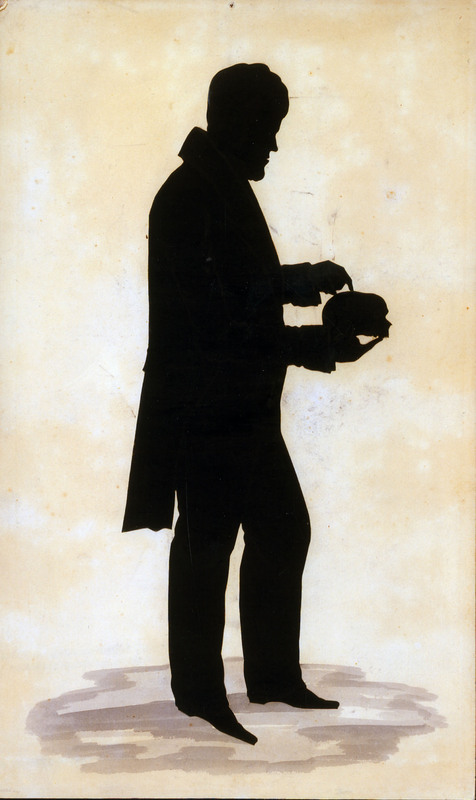Johann Gaspar Spurzheim
While still a medical student in Vienna, Johann Gaspar Spurzheim (1776-1832) became acquainted with Franz Joseph Gall and his work and began to assist with his anatomical research in 1804. After publication of the first two volumes of Anatomie et Physiologie, Spurzheim left Gall in 1813 and went to England. He began to alter the phrenological tenets, adding some additional faculties—bringing the total to thirty-five—for greater precision and rearranging their location on the skull. It was also Spurzheim who appears to have first popularized the word "phrenology," meaning "the study of the mind." According to Spurzheim's system, the cerebral faculties were either affective (pertaining to emotions and tendencies, such as combativeness, cautioness, and hope) or intellectual (perceptive and reflective, such as size, weight, calculation, time, and comparison). As phrenology developed, its proponents isolated even more faculties, but the essential outline as formulated by J. G. Spurzheim remained the basis for study.
Spurzheim began a series of lectures in England and was even invited to speak on phrenology at Cambridge University. He also began to publish his research and theories in such works as The Physiognomical System of Drs. Gall and Spurzheim (1815), Observations on the Deranged Manifestations of the Mind (1817), Observations sur la Phraenologie (1818), Phrenology in Connexion with the Study of Physiognomy (1826) and Outlines of Phrenology Being Also a Manual of Reference for the Marked Busts (1827). Most of these volumes went quickly through a number of editions and translations in France, Germany, England, and America.
From the outset, phrenology inspired both amusement and bitter controversy. An early review of The Physiognomical System which appeared in the Edinburgh Review (June 1815) stated "The writings of Drs. Gall and Spurzheim have not added one fact to the stock of our knowledge respecting either the structure or the functions of man; but consist of such a mixture of gross errors, extravagant absurdities, downright mis-statements, and unmeaning quotations from Scripture as can leave no doubt, we apprehend, in the minds of honest and intelligent men as to the real ignorance, the real hypocrisy, and the real empiricism of the authors... Such is the trash, the despicable trumpery, which two men, calling themselves scientific inquirers, have the impudence gravely to present to the physiologists of the nineteenth century, as specimens of reasoning and induction."
But many members of both the scientific community and the general public were attracted to phrenology, and, such attacks notwithstanding, J. G. Spurzheim had a great success in popularizing the movement, inspiring the formation of some twelve phrenological societies in addition to the publication of books, journals, and newspapers devoted to the movement.

